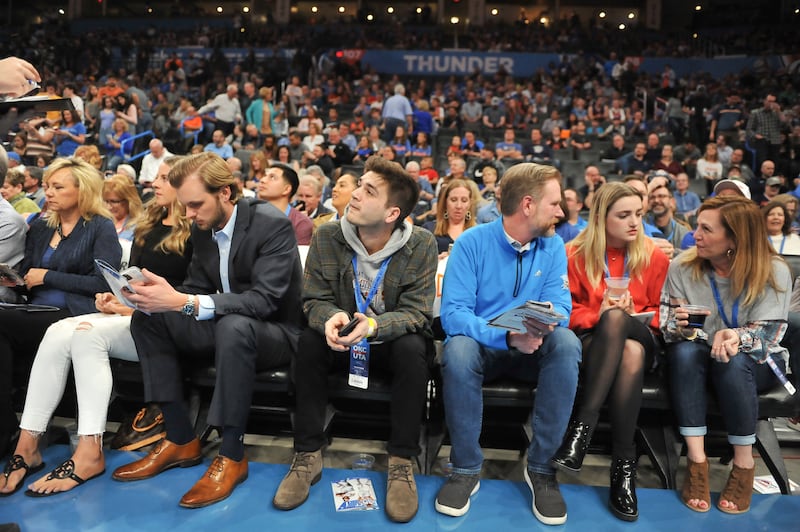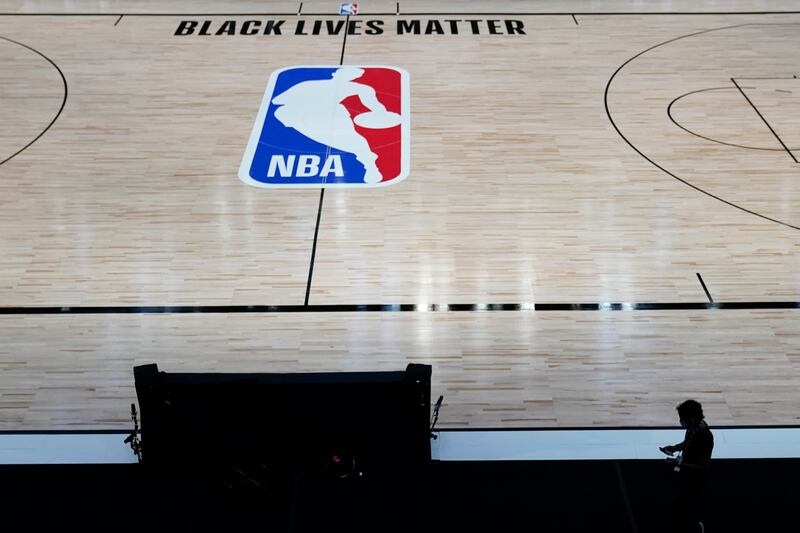ORLANDO — The first time I was tested for COVID-19 was after spending hours in the bowels of Chesapeake Energy Arena in Oklahoma City on March 11, the day the NBA stopped.
Utah Jazz center Rudy Gobert had tested positive for the coronavirus earlier in the evening with the results coming back just moments before the Jazz and Thunder were supposed to tip off. The game was canceled, the NBA season suspended. It didn’t seem real. I was scared.
Quietly I cried, fearing for myself and the people I’d been in contact with, but soon I masked my fear and anxiety with anger and frustration.
In the visiting locker room of the arena, surrounded by Jazz players, staff and Oklahoma health department workers donning scrubs, gowns, masks, face shields and gloves, the dreaded deep nasal swab was a shock to the system, much like everything that night.

I didn’t sleep, and the whole thing seems like a blur. We were all so much less knowledgeable and so unprepared for what was happening and what would continue to unfold over the next several months.
On Tuesday I was tested for COVID-19 for the second time. This time it was in a ballroom at a ritzy resort-style hotel just outside of Walt Disney World in Orlando. I wore a mask into the hotel — as I do everywhere I go these days — and was greeted with a temperature check by an NBA staffer in the lobby.
Once inside the great room where the testing would take place, likely used for wedding receptions and awards luncheons back when things were normal, I was asked for personal identifying information, standing 6 feet away from a woman who was wearing the same garb as the department of health workers in OKC. In quick order, I was ushered over to a second station where the test took place, this time a shallow nasal swab. Being tested wasn’t a shock, it was a comfort and a sign of the safety measures being taken. The whole experience was pleasant and easy and expected, the new norm adhered to at every step.
The juxtaposition of my experiences is not unlike that of the NBA at large.
The league was not built to withstand a pandemic. The suspension of the season was reactionary. It came amid panic and at a time when the U.S. was only just starting to grapple with the severity of the virus.
On Thursday, the restart of the NBA season comes from an incredibly detailed plan, months in the making. Instead of living in panic, the NBA has created an environment of safety and comfort in a world where masks, and hearing things like “quarantine” and “antibody testing,” are normal and not foreign to the ear. And, when the first jump ball is tossed up for the NBA’s resumption, the Utah Jazz will be on the court, once again a part of this historically strange season.
“Our game in Oklahoma City and being in that locker room, all of the things that came with that and then the opportunity to be a part of the first game upon return, retrospectively we’ll look back and understand that there’s a significance there,” Jazz coach Quin Snyder said.
“I think there’s been a strong belief within our team that this is something that ultimately, as difficult as it was over a period of weeks and months, has become a unifying experience.”
From quarantine to bubble
The NBA suspending its season indefinitely was an unexpected shock, and when other major sports leagues and events followed suit, it seemed like the world came to a standstill with no return in sight. A return to action would be based on “data, not dates,” NBA commissioner Adam Silver said at the time. A restart plan would require daily testing, continued isolation, constant monitoring and an understanding of how the virus is spread. It was going to take time, and the weeks and months dragged on.
Meanwhile, the Utah Jazz were at the epicenter of basketball drama. Not only was it the team that will forever be remembered for the role it played in the shutdown, but there was concern bubbling regarding the relationship between Gobert and Donovan Mitchell, the Jazz’s two most important and influential players.
Gobert’s diagnosis sparked fear, not just in me, but throughout the sports world, and probably most notably in Mitchell. It makes sense to me that Mitchell was frustrated and angry when the next morning, on March 12, he learned he was the second NBA player to test positive for COVID-19. Those are relatable emotions because this virus is deadly and at the time seemed unpredictable.
“A lot of things happened, not just for us, but for every single person on this planet,” Gobert said Wednesday. “It was a pandemic, sports got shut down, a lot of people lost family members, their lives.”
Isolated in different parts of the country, witnessing the tragedy of the virus play out on the news and social media, the players tried to keep attention off themselves, but to no avail. Fans, pundits and reporters questioned whether the Jazz would be able to move forward with Mitchell and Gobert if they were unable to reconcile.
So, the Jazz front office, the players and those who would speak on the record tried to send the message that all was well in Jazz-land. The sentiment shared from those within the organization was the right one, but until the two were on the court together, rumors of unrest would continue.
All of this messaging was being put forth as the league was digging into minute details, trying to find a way to bring basketball back to life. So as social distancing, self-isolating, Zoom meetings and wearing PPE in public became a way of life, the NBA bubble was born.
The NBA would be heading to Walt Disney World in Orlando, essentially creating an NBA summer camp in which a champion would be crowned in an empty arena.
Racial injustice protests
But, just as the plan was coming together in earnest, protests against racial injustice erupted across the country. NBA players, coaches and executives, who represent a predominantly Black league, felt a moral obligation to make advocating for equal rights a part of the league’s return, which would be taking place in Florida where the coronavirus surges, claiming more lives every day.

On Thursday evening, when the NBA resumes the 2019-20 season at ESPN’s Wide World of Sports Complex at Disney World, it will do so on a court that prominently displays “Black Lives Matter,” in bold uppercase lettering.
The Utah Jazz will walk onto the court to play a meaningful game for the first time since March 11, the day the NBA stopped.
“It’s only right that we start it off. It’s a big moment for sure, not just for us but for the league, and for us to go out there and hoop and show that we’re over all the things that have happened. We’re all excited.” — Donovan Mitchell
The NBA will continue to test players, coaches and staff daily while in the bubble, hoping their safety plan continues to work. The Jazz will try their best to make a deep run in the playoffs despite sharpshooter Bojan Bogdanovic being sidelined following wrist surgery. Gobert and Mitchell will do their best to silence any doubts that tension between them is in the past.
“It’s only right that we start it off,” Mitchell said. “It’s a big moment for sure, not just for us but for the league, and for us to go out there and hoop and show that we’re over all the things that have happened. We’re all excited. It’s definitely a historical moment for sure. One we’ll never forget, for one. But two, it’ll make this game, and all the games, we’ll be more appreciative of them because we know it could be stopped at any moment.”
In hindsight, we can see how fortunate it was that the sports world didn’t continue on as if nothing was wrong. Gobert’s diagnosis was the first domino to fall in a sequence that potentially saved thousands of people from contracting the coronavirus. It’s easier to see that as a silver lining of the situation now, more than four months after the fact. But, in real time, it was hard not to be dominated by fear.
In the NBA — the new NBA — excitement and optimism rule. The players are interviewed via Zoom, they wear masks when they aren’t on the court and they speak out about social justice as they prepare for Thursday’s resumption of the 2019-20 season, and every day begins with a routine COVID-19 test that is not a shock, but rather commonplace.


